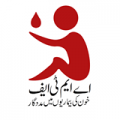You are here
News
2015
Aug 2015 We decided to start the Perinatal Stem Cell Society (PSCS) after we edited the book, Perinatal Stem Cells, Second Edition. We wanted to continue the momentum of the book and create a society where like-minded individuals could meet and collaborate to advance the perinatal stem cell field towards the clinic. Our goals for the society are embodied in our slogan: "Advancing perinatal stem cell research on the path toward treatment".
Aug 2015 Amir Hossein Rashidi is a 12-year old boy from Iran, Fars Province, Shiraz. He became sick with a disease known as leukemia (ALL type 2) since he was only 4 years old. He underwent chemotherapy for a couple of times, but each time the disease relapsed after a short while. To save his life, the experts reached to the consensus that a stem cell transplantation would be the only solution.
Amir Hossein has two siblings whose bone marrow were not matched with him, while his younger brother, Amir Taha, was a perfect match. The matching baby brother had his cord blood saved in Royan Stem Cell Technology Company.
Aug 2015 A haploidentical transplant (haplo) is a half matched stem cell transplant from a family member. Haplo donors can be parents, children, siblings, and sometimes cousins of the patient. A biologic parent or a biologic child is always a half match to the patient, based on genetics. A haplo transplant can be used when there is no matched sibling or unrelated donor. Recently there has been an increase in the number of haplo transplants, particularly in Europe.
Jul 2015 ClinImmune's public cord blood bank has teamed up with the private cord blood bank CariCord. This partnership recognizes the growing number of evolving medical applications for both publicly donated and privately stored cord blood stem cells.
Jul 2015 Since the passage of the Stem Cell Therapeutic and Research Act of 2005, the U.S. federal government has subsidized a national network of public cord blood banks. With this support, the U.S. inventory of unrelated donor cord blood units has increased to over 200,000. These are available to any patient in any nation who needs an unrelated donor for a transplant of blood-forming (hematopoietic) stem cells.
Jul 2015 The most important factors in determining a successful stem cell transplant are human leukocyte antigen (HLA) match and number of living (viable) cells available for treatment.
HLA is the finger print equivalent to see if the donor matches the patient. If they do not, then game over. However, if there is a good enough match, then 25 million total nucleated cells (TNC) per kg of bodyweight are required to give the patient the best chance of a successful stem cell transplant.
Jun 2015 The inaugural Cord Blood Industry Report from the Parent's Guide to Cord Blood Foundation reveals that sibling transplants for thalassemia are becoming the dominant allogeneic therapy with cord blood from family banks. An allogeneic therapy is any therapy where the cord blood is used for a person other than the baby from which it originated. A pie chart of the cumulative allogeneic therapies through the end of 2013 is shown at left.
Jun 2015 AMTF (Afzaal Memorial Thalassemia Foundation) - Helping Blood Disorders is a charitable foundation that was launched in Palistan by Dr. Asim Qidwai and others to help children suffering with blood disorders.
May 2015 There is an aura that surrounds stem cells and their use. These rare cells are lifesaving, and are often the last resort, when transplanted into patients with blood malignancies. Umbilical cord blood (UCB) is a source of blood stem cells and their use to treat patients has been embraced worldwide since the first UCB stem cell transplant in 1988.
May 2015 The ocular (eye) surface includes two major territories: the cornea and the conjunctiva, bordered by the upper and lower eyelids. It is imperative that this ocular surface remains healthy to ensure clear vision, maintain comfort and guard against infections.
The ability to form tears plays an essential role in the maintenance of a healthy cornea and conjunctiva. The tear film over the eye's surface consists of mucus, aqueous, and lipid layers and contains many growth factors and vitamin A, which are essential for regulating the proliferation, differentiation, and maturation of the ocular surface epithelium.










